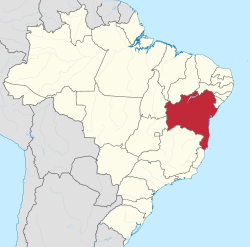| Chthonerpeton exile | |
|---|---|
| Scientific classification | |
| Kingdom: | Animalia |
| Phylum: | Chordata |
| Class: | Amphibia |
| Order: | Gymnophiona |
| Clade: | Apoda |
| Family: | Typhlonectidae |
| Genus: | Chthonerpeton |
| Species: | C. exile |
| Binomial name | |
| Chthonerpeton exile | |
Chthonerpeton exile is a species of caecilian in the family Typhlonectidae. It is endemic to Brazil, and only known from its imprecise type locality "Bahia". [1] [3] Only one specimen is known [1] and now lost. [3] The specific name exile, form Latin exilis , refers to the "relatively slender, delicate shape of the body and head." [2] The common name Bahia caecilian has been coined for this species. [1] [3]
Contents

